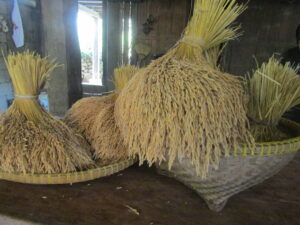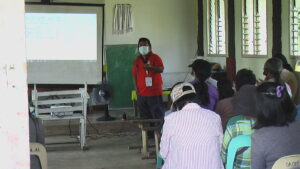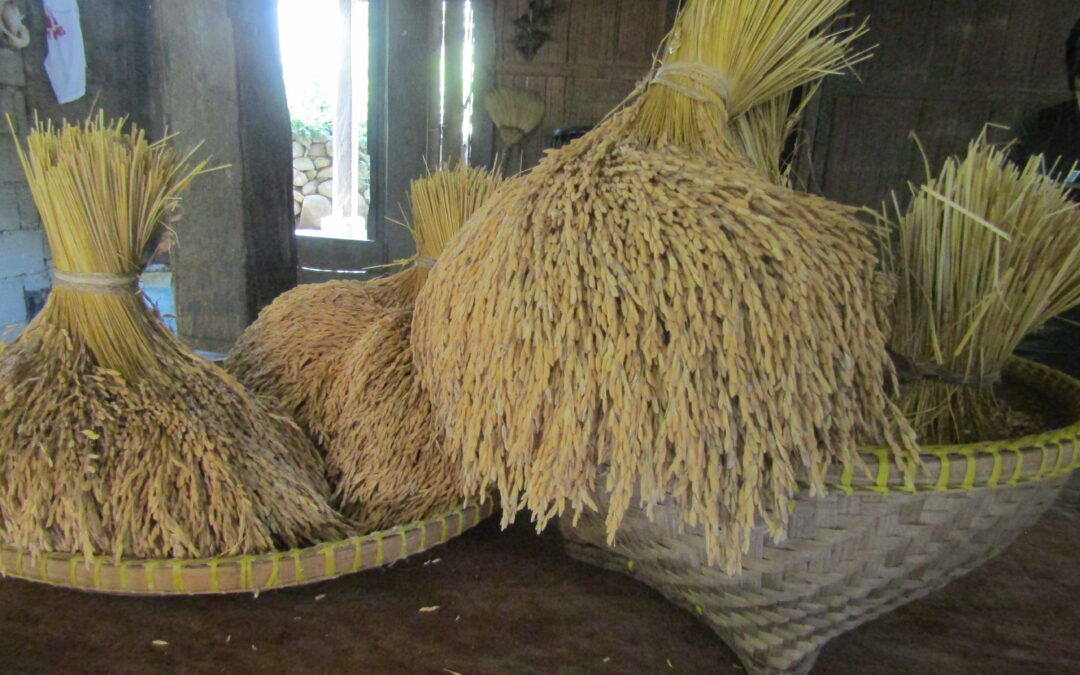As we celebrate the world food day with the theme “Our actions are our future- Better production, better nutrition, a better environment and a better life” the people of Balbalan Proper celebrated the fruit of their collective hard work through inauguration of the rice mill supported by Cordillera Disaster Response and Development Services.
A traditional practice called “songa” wherein community would butcher animal as an offering in gratitude to what they received. “Songa” or commonly known inauguration ceremony is coupled with playing gongs. Community people are gathered together with invited guests crucial to the success of the project. Unfortunately, due to restrictions brought by Covid-19 pandemic guests from outside community were not able to join the celebration.

most of varieties planted in Balbalan are of traditional varieties since they can withstand weather conditions.
Barangay Balbalan Proper is among the few remaining barangays in Kalinga that continue the practice of traditional method and process of palay farming from land preparation, planting, harvesting and post-harvest activities. Traditional varieties such as unoy, binauko, darat and sinapon are the main palay varieties being planted in wet rice farms.
Most of the people in Sadsadan and Dao milled the palay manually through the wooden pestle and mortar. Rice mill was introduced as early in 1993 in Balbalan Centro which is privately owned and farmers have to transport their palay for more or less 3 kilometers. In 2012, Mr. Quebes also brought a rice mill in Simangan, Dao where people can mill their palay with corresponding fee.
At present the community has two privately-owned rice mill. Since these are private, charges and operation is dependent to the owner. Due to lack of technical knowledge these rice mills are often not working and has a high percentage of broken rice.
The ricemill and tresher was requested by the Sadsadan-Dao Innabuyog Organization to CorDisRDS in 2018 during the general assembly. Women primarily raised the issue of their hardship in pounding rice manually.In 2019, a feasibility study was conducted with the assistance of CorDisRDS staff. Shortly after the study was the validation and community planning wherein they were able to identify site, counterpart and schemes of implementation.
As an indigenous community the practices of mutual help and cooperation or locally called as innabuyog, pappango and angkas are still strongly observed especially in farming, house construction and other community activities. This practice was carried out for the construction and installation of the ricemill.

During trainings participation of women are ensured since they are the ones doing the books or managing the rice mill.
Alongside the provision of rice mill and thresher, an operators training was conducted wherein community members were taught how to operate the rice mill and troubleshoot problems that may arise. Simple Book Keeping and auditing was also given as an additional topic to help community in better management.
The rice mill and thresher projects and the multipurpose building were completed as early as May 2020 in the midst of the first lockdown, the officers of SADINO decided that the inauguration ceremony shall be set as the situation get better. However, the project was formally turned over after the project assessment and begun to operate.
One of the highlights during the SADINO three years assessment was the contribution of the rice mill and thresher to the members and to the community as a whole. “malaksid iti asideg ken nababa nga abang kumpara kadagiti private a kiskisan ket dakkel a tulong a pagtarayan a gumatangan iti bagas ti maurnong a collection” “aside from a near and cheaper rental as compare to private rice mills, it is a big of help to us buy the rice collections in times of shortage”. Mrs. Helen, the treasurer of Rice mill and thresher committee said “Makatulong metlaeng ti tuyo kadagiti agtaraken iti dingwen ta nalaklaka nga adayo kaysa jay magatang idiay Tabuk tapos inayun mo pay ti puliti na” The rice bran also help those who raise livestock for it is far cheaper than from buying in Tabuk plus its freight”. Aside from cash, in-kind such as rice and rice bran can be use as payment as milling rental.
Some individuals from adjacent communities like Maling and Balbalan centro come to buy rice bran. A woman also said that the rice mill project greatly ease the burden of manual threshing and pounding especially to the women and children. “Idi, nu sumangpet ka iti balay nga aggapo iti talon ket agikamakam ka pay nga agbayo tapno adda maisaang, tattan ket limmag-an ti biag tayo. Apaman a magapas ti pagay ket ipa-thresher mon ken addan ti kiskisan a mangbayo” Before, when you arrive at sundown, you have to pound a rice for dinner, today our life is more at ease. Upon harvesting the palay, use the thresher and there is the rice mill to pound it”. The woman lamented

Mr. Moses Bangit-CorDisRDS staff facilitating assessment to draw-up lessons learned and recommendations from the impelementation of Rice mill.
.
For more than a year of operation, the rice mill and thresher management is not easy especially that it is the first time of the organization to run such cooperative as revealed during the assessment. Mr. Oscar Daligdig, SADINO vice chairman and supervisor of the rice mill and thresher said that the rotational operation of identified operators did not work. However, one of them with high initiative sustained. With this experience and lesson, the organization decided to give at least a monthly honorarium for the operators of about 12% of the rental.

